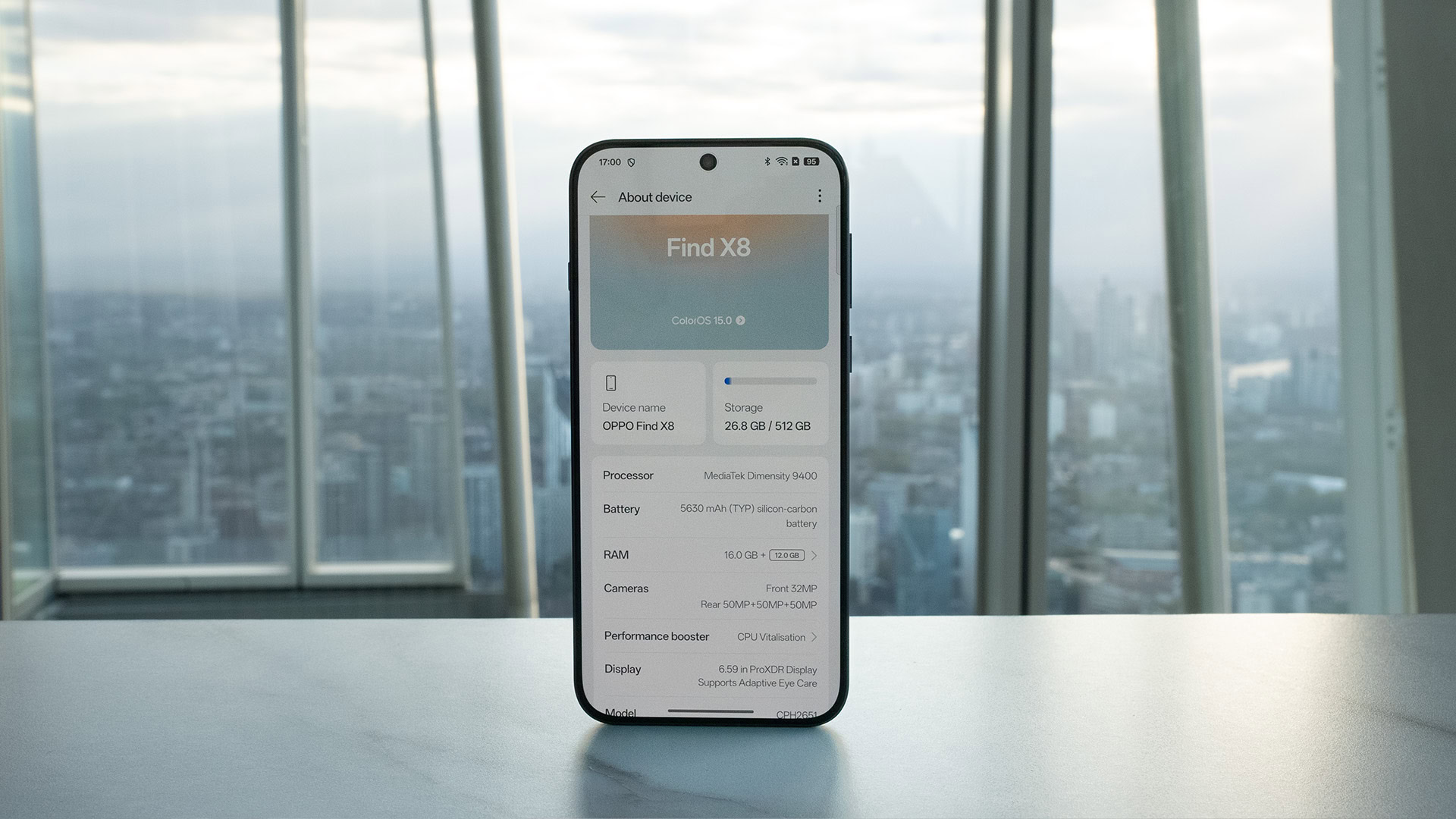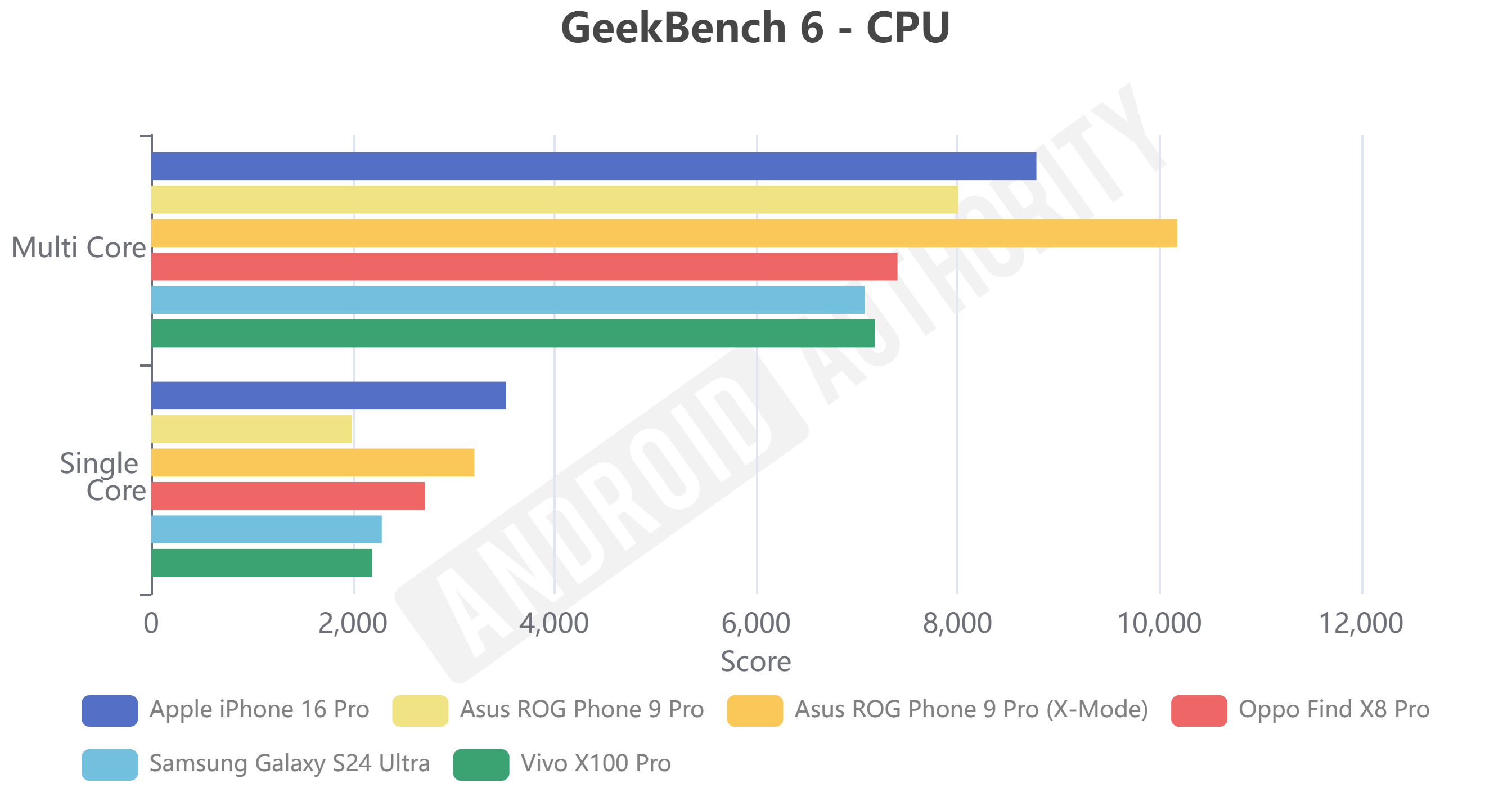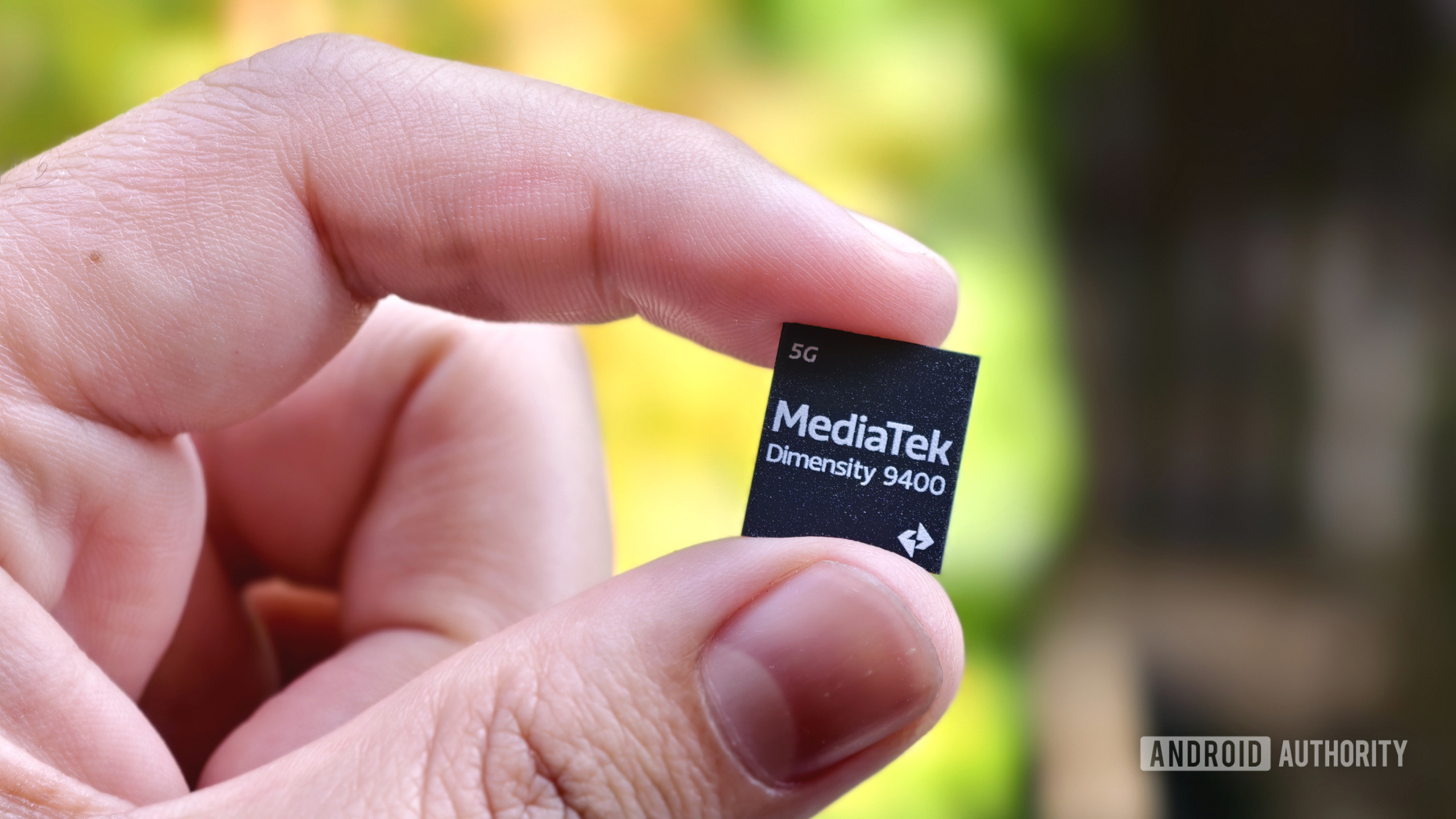Affiliate links on Android Authority may earn us a commission. Learn more.
I benchmarked the Snapdragon 8 Elite's biggest competitor and it's great for gaming
Published onNovember 21, 2024

Qualcomm’s Snapdragon 8 Elite promises big performance and energy efficiency gains, but it’s reported to come at a steep price. With flagship smartphone prices already at all-time highs, some manufacturers, like OPPO and its new Find X8 series, are looking for more affordable powerhouse chipsets. Enter MediaTek’s Dimensity 9400.
But do you lose out on top-tier performance by opting for a phone without a Snapdragon processor? We’ve run the OPPO Find X8 Pro through our benchmark suite to find out.
You’re reading an Authority Insights story. Discover Authority Insights for more exclusive reports, app teardowns, leaks, and in-depth tech coverage you won’t find anywhere else.
Before we get to that, let’s quickly recap the key chipset differences. Qualcomm’s Snapdragon 8 Elite debuts its custom Oryon CPU cores. There are eight of them in total, two clocked at 4.32 GHz and six at 3.53 GHz. Likewise, MediaTek eschews little cores in favor of a beefy Arm Cortex-X925 at 3.63GHz, three Cortex-X4s at 3.3GHz, and four Cortex-A720s at 2.5GHz. Qualcomm has the clock speed edge, but MediaTek’s chip is cache-heavy, so it could still perform well.
For graphics, Qualcomm’s new architecture for its Adreno 830 is blazing fast for modern games, while MediaTek uses a 12-core Arm Immortalis-G925 GPU that will be no slouch either. Both chipsets support fast LPDDR5X RAM and are built on TSMC’s efficient 3nm N3E process. Of course, there’s more to each chip than that, but these fundamental architecture changes will be the most significant factors in daily performance. Let’s get into the numbers.
Snapdragon 8 Elite vs Dimensity 9400 benchmarks
For today’s comparison, I’ve picked our Snapdragon 8 Elite packing ASUS ROG Phone 9 Pro (in both balanced and performance profiles), the last-gen Galaxy S24 Ultra for the 8 Gen 3, Apple’s latest iPhone 16 Pro, and the vivo X100 Pro with a Dimensity 9300 to go up against the Dimensity 9400 packing OPPO Find X8 Pro. Let’s start with CPU performance via GeekBench 6.

Showcasing ASUS’ two performance profiles gives us a good idea of where MediaTek’s chip falls. It ends up right between the battery-focused and max performance sweet spots of the 8 Elite’s single-core performance but some way behind in multi-core scores even when the Elite is being efficient.
In fact, multi-core scores don’t seem to have improved much from the previous generation. This could be due to the use of the same X4 and A720 layout, though these have seen a 500MHz uplift each. MediaTek projected a 28% multi-core gain over last year, so perhaps OPPO is playing it conservatively.
Custom CPU cores from Apple and Qualcomm remain out in front.
In terms of peak speeds, the Snapdragon 8 Elite has an 18% lead in single-core performance over the Dimensity 9400 in the OPPO Find X8 Pro and a 37% lead in multi-core. Apple’s A18 Pro holds a 30% single-core and 19% multi-core lead. The Cortex-X925 seems somewhat behind the custom Oryon and Apple takes on the Arm CPU architecture, so OPPO’s latest flagship isn’t quite as quick as the fastest around.
All that said, the Dimensity 9400 sees a reasonable single-core CPU uplift over the previous generation, but a 5% multi-core gain is pretty meager. Still, the chip is certainly no slouch when it comes to daily tasks.
As for graphics, the Dimensity 9400 seems much more impressive. We were expecting around 40% better peak performance, but our benchmark results hit a 47% improvement in Wild Life Extreme and a whopping 62% gain in Solar Bay’s ray-tracing test compared to the vivo X100 Pro’s Dimensity 9300 chip. However, let’s treat this as a rough improvement, as we’re comparing vivo to OPPO here.
Either way, the jump propels Arm’s latest GPU right up to the top of the charts alongside the Snapdragon 8 Elite. The OPPO Find X8 Pro also produces a decent sustained performance result, even if scores gradually decline with temperature. Still, temperatures only peaked at 38.8 °C, far cooler than any of the other handsets in our test.
In a win for gamers, the Arm Immortalis G925 GPU runs fast and cool.
For comparison, the ASUS ROG Phone 9 Pro hit 48.0°C in the same tests to keep performance up; otherwise, it sees a substantial performance cut to keep temperatures down. Both the Dimensity 9400 and Snapdragon 8 Elite are overkill for running the latest Android games and emulators, but it looks like MediaTek’s chip might be the better option for those prolonged gaming sessions.
MediaTek Dimensity 9400 early verdict

Our first look at the Dimensity 9400 in a commercial smartphone is a mixed bag. On the one hand, the touted CPU gains haven’t materialized, but we know that OPPO likes to optimize for energy efficiency over outright performance and could be holding off on full throttle to maximize battery life. Perhaps other MediaTek Dimensity 9400 handsets will rank a little higher. Even so, the chip is faster than last year’s models and has plenty of performance for all your daily and demanding tasks.
Our first Dimensity 9400 phone looks solid, but others might push performance further.
The jump in graphics capabilities is a more welcome surprise. Arm’s Immortalis GPUs have benchmarked a little off the pace previously (but have been solid for real games), but the G925 appears to be a significant upgrade. With highly competitive performance and seemingly much lower temperatures than the 8 Elite, gamers should keep an eye on this future-proof chip.
Of course, we haven’t touched on the Dimensity 9400’s other upgrades, which include 8K/60fps video capture capabilities and a far more powerful AI engine, which are equally crucial for a proper flagship experience. First impressions are good then, but keep in mind this is just our first Dimensity 9400 smartphone, and we’ll need a larger sample set to be definitive about the chip. Still, with Snapdragon prices sky-high, we’re expecting to see a few more of them in the very near future.